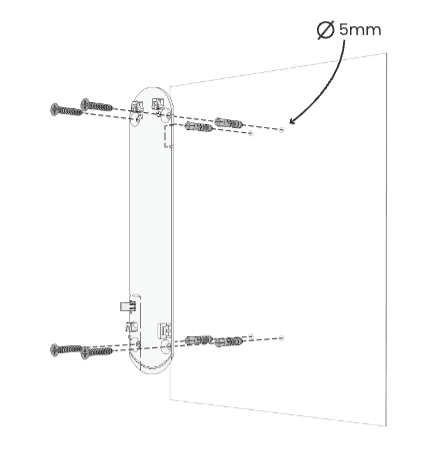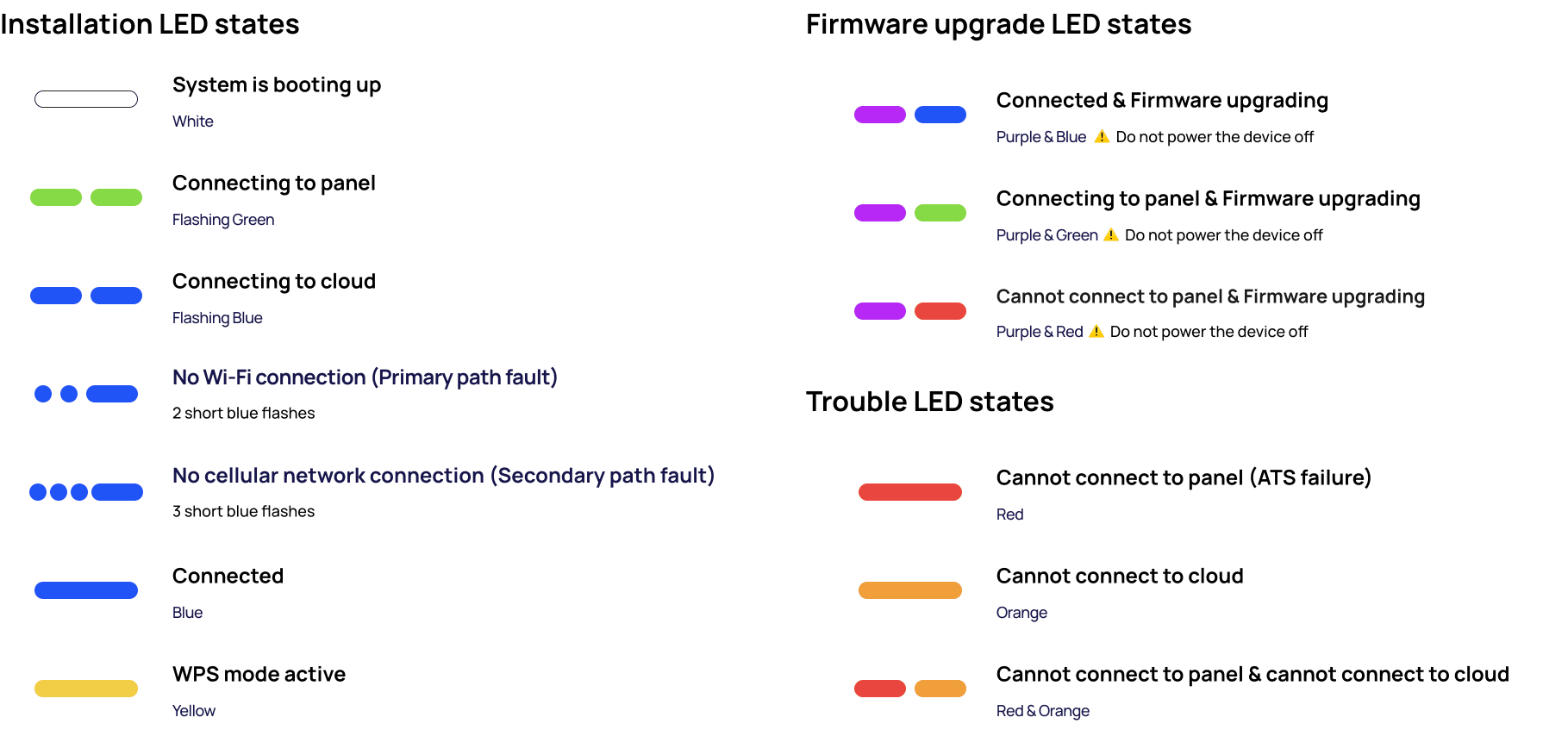
Supported Alarm Systems
• Premier Elite 24 • Premier Elite 64 • Elite 64-W • Elite 64-W LIVE • Premier Elite 88 • Premier Elite 168
📦 What's in the box
Olarm MAX
Internal Power Supply Lid
Super Capacitor With A JST Connecter *Model Dependent
4x Wall Plugs & Screws
2x Enclosure Locking Key
Reversible Peripheral Cable
🛠️ Installation tools required
Drill with a 5mm bit
Phillips-head screwdriver
Flat-head screwdriver
Wire stripper or side cutters
Cable for peripheral wiring (4 Core or 6 Core Comms Cable, 2 core Twin Flex or Ripcord)
Troubleshooting LED States
Mount the Olarm MAX
Follow the diagrams below to mount the Olarm MAX.
Using the screws and wall plugs provided, mount the backplate to the flat surface as shown in the diagram below.

Mounting the backplate to the surface
Place the Olarm MAX flat against the mounted backplate and slide the enclosure down to click into place
Mounting the device to the backplate
Using the locking key, apply force to insert the mechanism into the key hole until flat against the enclosure, which is indicated by two clicks.
Locking the Olarm MAX shut
Note:
Do not mount the Olarm MAX inside or against the alarm system enclosure, as this will hinder its connectivity capabilities.
Do not mount the Olarm MAX near any other communication equipment, as they will inter with each others abilities to transmit signals.
Utilise a non-metal enclosure should you mount the Olarm MAX outdoors.
The maximum distance between Olarm MAX and Alarm System is 3 metres.
✅
Final Installation Checklist
Olarm APP
Utilise the Olarm MAX status tab in the app to check your installation
Has the Olarm MAX been added to the user’s app?
Is the device connected to the available onsite Wi-Fi?
Are the in-app functions working?
Arm & Disarm
Panic feature
App notifications
Signal Delivery
Has the Alarm Receiving Centre monitoring the Olarm MAX received signals from the device on their relevant monitoring software?
Installation Position
Is the location of installation adequate for a communication device that relies on connectivity?
Are there any peripherals surrounding the device that would interfere with its ability to transmit signals?
Does the distance between Alarm System and Olarm MAX exceed 3 metres?
Olarm MAX
Has the required Master/UDL Code been entered in the Olarm APP?
Has the external antenna been enabled should there be one installed?
Has the super capacitor been plugged into JST connector?
Has the tamper trigger been tested by unmounting the device?
Should the device be 0G capable, has the the 0G connectivity been tested?
Should the installation require it, has the ATS Fault monitoring been wired, programmed and configured in the APP?
Need help? Contact our support team














